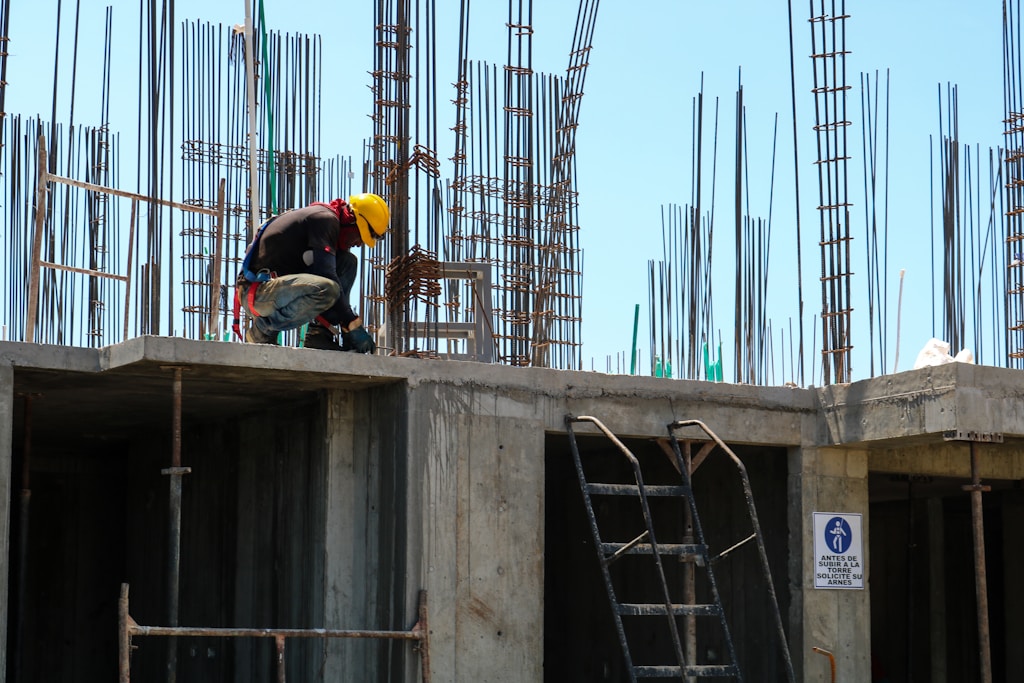London’s construction market is one of the most dynamic and competitive in the world. With constant developments, innovations, and shifting regulations, staying ahead requires more than just technical skills; it demands strategic foresight and precision. For contractors, the ability to deliver projects on time and within budget is crucial for their reputation and survival in this challenging environment. This is where building estimators play a pivotal role. By providing accurate cost assessments and ensuring resource efficiency, estimators help contractors remain competitive, attract new business, and maintain profitability in London’s fast-paced construction landscape.
The role of building estimators in cost control and budgeting
The first and foremost function of a building estimator is to provide accurate cost forecasts for a project. This involves a deep dive into the project’s plans, specifications, and any potential risks that may arise during construction. By evaluating everything from materials and labor to permits and unforeseen expenses, the estimator develops a comprehensive budget that serves as the financial backbone of the entire project.
In the London market, where costs can easily spiral out of control due to high property values, fluctuating material prices, and complex regulatory requirements, this budgeting role is indispensable. A slight miscalculation in the early stages can lead to substantial financial losses down the line, potentially undermining the entire project. Estimators help mitigate these risks by conducting thorough cost analysis and anticipating variables, ensuring that contractors can set realistic budgets and stick to them.
Moreover, by using advanced estimating software and tools, estimators can further refine their calculations, integrating real-time data on material prices and labor costs. This allows for more precise estimates, which are crucial for competitive bidding. When contractors present a well-calculated and transparent bid, they not only enhance their chances of winning contracts but also avoid future disputes over unexpected costs.
How estimators enhance project efficiency and resource allocation
Beyond budgeting, building estimators also play a significant role in optimizing project efficiency. London’s construction projects often operate under tight deadlines and in crowded urban settings, where delays and resource mismanagement can be costly. Here, the estimator’s ability to allocate resources efficiently becomes invaluable.
A well-prepared estimate breaks down the project into specific phases, assigning costs and resources to each segment. This detailed planning ensures that materials and labor are available exactly when they are needed, reducing downtime and preventing costly delays. Estimators collaborate closely with project managers, architects, and suppliers to ensure that the logistical flow of the project is smooth and uninterrupted.
Additionally, effective resource allocation by estimators can prevent over-ordering or under-utilization of materials. For example, in a city like London where storage space on-site is often limited, ordering materials in the right quantities and at the right time is essential to avoid clutter and inefficiency. Estimators, by anticipating needs accurately, help contractors maintain a lean and efficient workflow that saves time and money, both critical elements in staying competitive.
For contractors looking to maintain a strong presence in the London market, investing in professional estimating services is a strategic move. To explore such services that combine industry experience with cutting-edge technology, visit https://estimedes.co.uk/ and discover how these solutions can enhance your project planning and execution.
The role of building estimators in risk management and compliance
Risk management is another area where building estimators prove their worth, particularly in London’s highly regulated construction market. From zoning laws to environmental regulations, contractors must navigate a complex legal landscape to keep their projects on track. A failure to comply with these regulations can result in costly fines, project delays, and reputational damage.
Building estimators assist contractors by identifying potential risks early in the planning stages. This includes recognizing areas where regulations may require specific permits or where environmental impact assessments might be necessary. By integrating this knowledge into their estimates, estimators not only account for the direct costs of compliance but also help contractors avoid the indirect costs associated with regulatory violations and project delays.
Estimators also play a crucial role in ensuring that health and safety standards are met. In a city like London, where building codes and safety regulations are particularly stringent, contractors must ensure that their projects adhere to these guidelines from the very start. Estimators help by incorporating the costs of safety measures, such as personal protective equipment, site inspections, and worker training, into their calculations. This not only ensures compliance but also protects contractors from legal liabilities.
By addressing these risks through careful planning and foresight, building estimators allow contractors to focus on delivering high-quality projects without the constant worry of regulatory setbacks. This peace of mind is a key factor in maintaining a competitive edge in the demanding London construction market.
How estimators improve contractor-client relationships through transparency and communication
In addition to their technical skills, building estimators also contribute to stronger relationships between contractors and their clients. One of the key challenges contractors face is maintaining trust and open communication throughout a project’s lifecycle. Clients need to feel confident that their project will be completed on time and within budget, and building estimators are instrumental in fostering this trust.
By providing transparent and detailed cost breakdowns at the outset, estimators help set clear expectations for both contractors and clients. This transparency reduces the likelihood of misunderstandings or disputes arising over costs as the project progresses. Furthermore, accurate estimates allow contractors to avoid the need for frequent adjustments or renegotiations, which can strain relationships with clients.
Effective communication is another area where estimators shine. They often serve as the bridge between contractors, clients, and other stakeholders, ensuring that everyone is on the same page regarding project costs and timelines. Estimators can also help manage client expectations by providing regular updates on project progress and cost variations, allowing for better planning and decision-making.
In a competitive market like London, where reputation and client satisfaction are crucial for winning future contracts, the role of the building estimator in maintaining strong contractor-client relationships cannot be underestimated. Their ability to foster trust through clear communication and accurate forecasting is invaluable in helping contractors not only meet but exceed client expectations.
Conclusion
In London’s ever-evolving construction market, staying competitive requires more than just technical expertise and hard work. Building estimators play a vital role in helping contractors achieve success by ensuring accurate budgeting, efficient resource allocation, effective risk management, and clear communication with clients. Their contribution allows contractors to deliver high-quality projects on time and within budget, ultimately strengthening their reputation and securing their position in a highly competitive industry.
As London’s construction landscape continues to grow and evolve, the role of building estimators will only become more crucial. Contractors who invest in skilled estimators will find themselves better equipped to navigate the complexities of the market, manage risks, and build lasting relationships with clients. In doing so, they will not only survive but thrive in one of the world’s most demanding construction environments.



